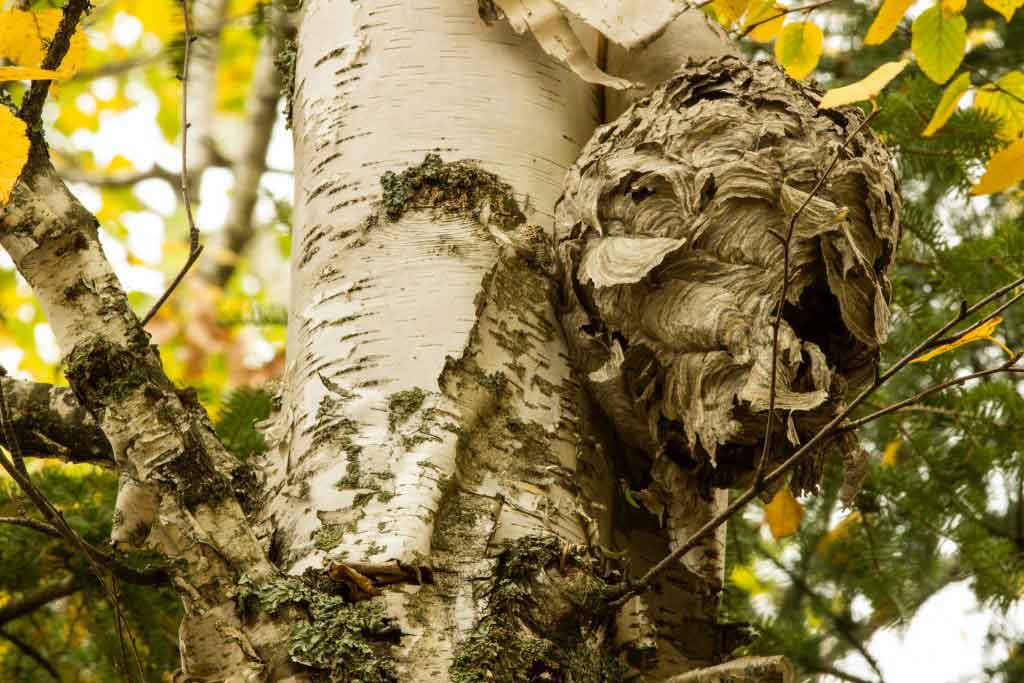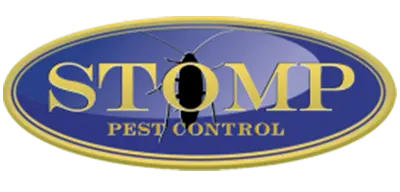Bees are beneficial to the natural ecosystem. However, if your home or business has bees that make it their home, you could find they are a bit of trouble—especially in the spring and summer months. If you’re curious about how to get rid of a bees nest, you’ve come to right place. In this post, the professionals at Stomp Pest Control will shed light on how to get rid of a bees nest using home remedies and natural spray. Bees can cause a few problems:
- Children can be afraid to go near play areas, especially pools.
- Bee stings are, at the least, uncomfortable and painful.
- Allergic reactions to bee stings can be life-threatening.

If bees in or around your home have caused any of these issues, then you’re most likely looking for a way to eliminate them. Thankfully, there are various ways to eliminate nests and bees altogether. Continue reading to learn how to get rid of them and how to prevent bee infestations next year.
Understanding the Bees of North Carolina
Bees are definitely quite an essential part of our environment. They are some of the best pollinators around, and they sometimes provide honey! It’s important to be able to distinguish the difference between good bees and unwanted bees. Here is a list of the top 5 bees that may be found in your North Carolina home.
1. Honey Bees
Honey bees are typically bright yellow-orange. Although they’re normally raised by a local beekeeper, they can sometimes be found inside a home. Here are a few places where a honey bee nest made of paper and wax may be found:
- trees
- walls
- attics
- anywhere that’s sheltered from rain and wind
2. Yellowjackets
Yellow jackets tend to be late-season pests and are ?small wasps. These wasps have yellow and black markings throughout their body. A yellowjacket bee nest is very difficult to find. Therefore, the best way to eliminate these bees is to cover outdoor food and use bee-protective hummingbird feeders.
If they’re still considered to be nuisance animals or someone in your family has a bee allergy, it might be best to call a pest control company.
3. Paper Wasps
Paper wasps aren’t a stranger to building nests in various home parts. These are a few different places
- Overhangs
- Window Sills
- Awnings
- Deck Railings
- Attics
- Crawlspaces
- AC Vent
Important: Paper wasps are great for catching caterpillars and other pesky insects in your garden. If they aren’t causing any harm, leaving them might be more beneficial.
4. Carpenter Bees
These bees are literally named due to their living circumstances. They are large, black, and yellow and can be found throughout wooden fixtures around your home in spring and summer. They can be found in the following places:
- Wooden decks
- Overhangs
- Other exposed wooden areas
The hive is easily located due to the pile of sawdust and trail of yellow waste found where the bees enter.
5. European Hornet
This is the largest hornet found throughout the US. Their nests are found throughout the home and surrounding area. These are extremely aggressive bees and can be dangerous. You’ll find European Hornet nests in the following places:
- Hollow Trees (most common)
- Barns
- Sheds
- Attics
- Wall Voids
The Best Bee Hive Removal Techniques To Apply
There are various techniques for removing bee hives from the home. Of course, as with most extermination techniques, some require more caution than others. Therefore, it’s important to read carefully, and if there’s any question at all, reach out today and chat with one of our pest control specialists.
1. Remove Bees Nest Using Spray
Nest spray works by attacking the nervous system. The spray will first cause paralysis and eventually kill all the bees. Follow these steps to make sure to get rid of your bee problem once and for all using a nest spray.
- Step 1: Determine which type of bee you have and purchase the spray for that bee (hornet, wasps, carpenter).
- Step 2: Wear protective clothing and be ready for an attack during bee removal
- Step 3: Spray the bee nest at night, while most of the bees are inside
- Step 4: Continuously check the nest and ensure more bees aren’t inhabiting.
Avoid skin contact and only spray outdoors or in a highly ventilated area. These sprays are dangerous for humans as well as bees.
2. Removing Bees Nest Using Powder
Powder dust is probably one of the best, simplest, and safest ways to get rid of bees. It essentially works the same as the spray, attacking the nervous system., causing paralysis and eventually death. Follow these steps:
- Step 1: Determine the type of bee you have and buy the powder accordingly/
- Step 2: Wear protective equipment to avoid stings.
- Step 3: Put the head of the powder bottle into the hive and squeeze
- Step 4: Dust the powder around entryways (doors, window sills, cracks) to prevent bees from entering the house.
- Step 5: Make sure to do this at night while all of the bees are in the hive.
Important: Keeping this insecticidal powder away from the skin and small family members is important.
3. Get Rid Of Bees Nests Using Vinegar
This one works a bit differently than the other; there’s not a direct science behind why or how Vinegar kills bees. But it’s most likely due to suffocation when the bees smell foul scents of the vinegar. There are two options for this great natural remedy; follow these steps:
Option 1: Drown the Bees
- Step 1: Start with several cups of water and add a few drops of vinegar to each.
- Step 2: Place the cups near or around the hive and wait a few hours.
- Step 3: Continuously check the water to see if you have any dead bees
Option 2: Spray the Nest
- Step 1: Mix equal parts of water and vinegar in a spray bottle.
- Step 2: Wear gloves to avoid stinging insects; approach and spray the entire nest with vinegar spray.
- Step 3: Wait about a week and spray again
- Step 4: Vacuum up the dead insects.
4. Design A Bee Trap
If you have ground bees and other bees nesting around your home, it might be more beneficial to try to catch them. This is safe and avoids direct contact with the hive. You could buy a bee trap or follow these steps to make your own at home!
- Step 1: Use an old two-liter soda bottle.
- Step 2: Cut the top off somewhere between 5 and seven inches from the top.
- Step 3: Flip the top and place it into the bottle’s opening (creating a funnel).
- Step 4: Use tape, industrial glue, or something else to secure the two pieces together
- Step 5: Fill the tricky new hive with a sweet solution to attract bees. Here are some ideas for a sweet solution:
- Artificial nectar
- Maple Syrup and water
- Cane sugar and water
5. Plant bee-repelling plants
Without killing bees, bee-repelling plants have the sole purpose of keeping them away. Avoiding flowering plants (except red marigolds and red geraniums) is one way to help repel bees, but here is a list of plant options that repel bees:
- Cucumber Plants
- Pennyroyal
- Eucalyptus
- Peppermint
- Citronella
- Cloves
6. Use an ultrasonic pest repellent
Last but certainly not least, an ultrasonic pest repellent will repel bees along with other insects. Keep your home free of insect stings and other pests. Simply plug one of these pest repellents into a wall outlet in the early spring, and don’t worry about the need to kill bees; this will just prevent them altogether.
Contact Stomp Pest Control in Raleigh, NC Today
If none of these answers have gotten you up and off the couch and into action, then it might be time to call a professional. Exterminating a stinging insect on your own is not easy. One simple bee sting may be worth it, but not hundreds!
At Stomp Pest Control, we’re here for you. Avoid any type of allergic reaction and call us today at (919) 231-3292 or fill out our contact form below. We use only the best products and offer free retreat services and a pest control guarantee. Don’t hesitate to chat with one of our experts about our programs today.
Contact Form
We would love to hear from you! Please fill out this form and we will get back to you shortly.

